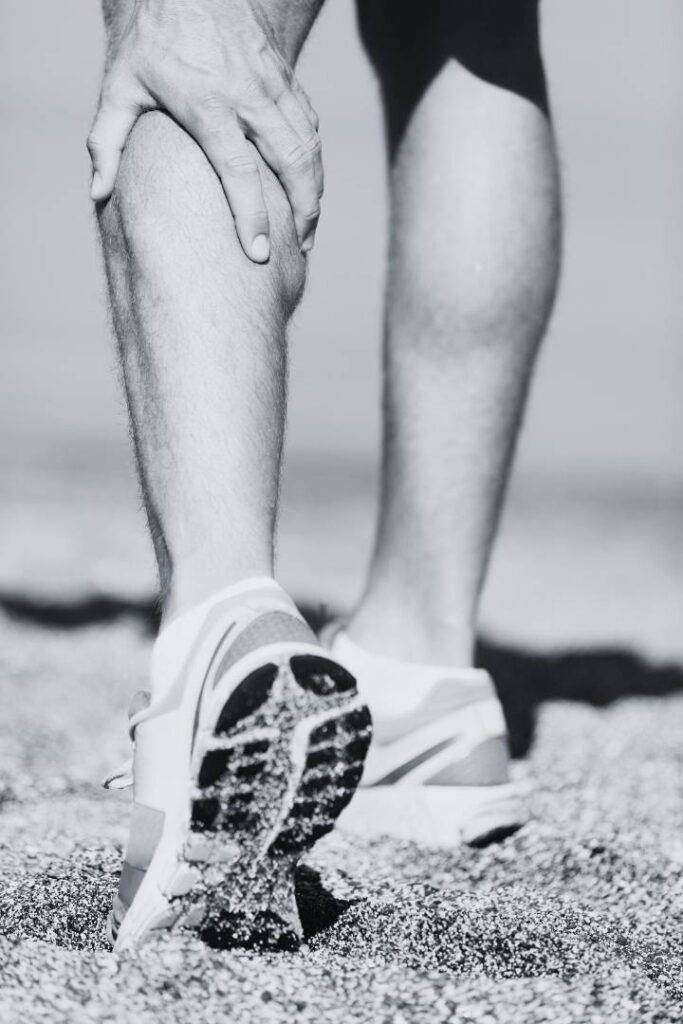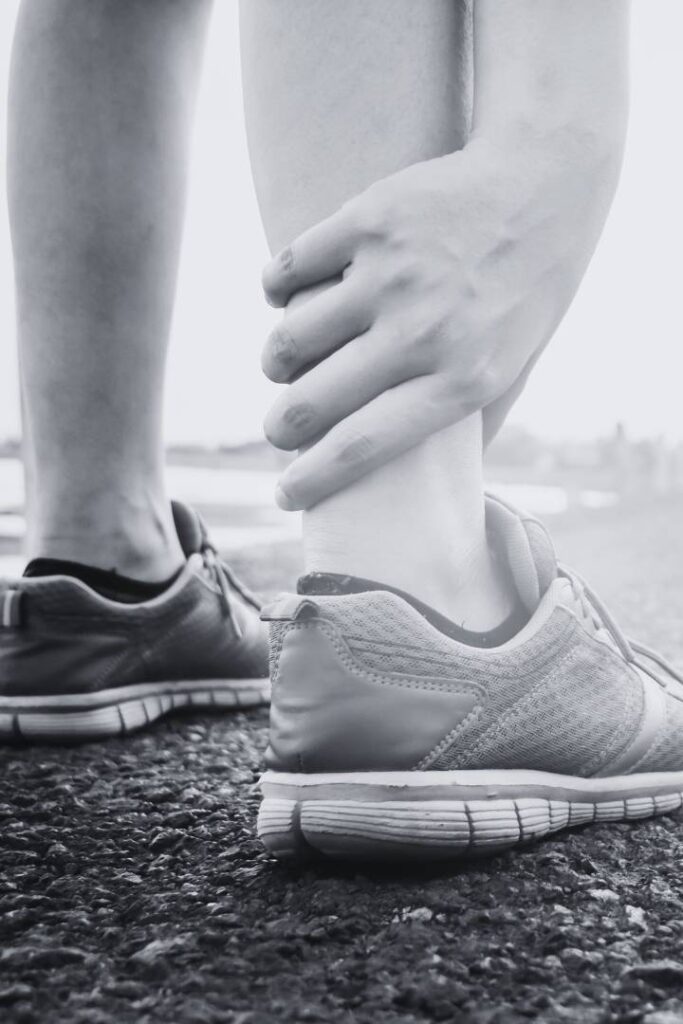Muscle Strains & Ligament Sprains Physical Therapy in Phoenix, Arizona
Comprehensive Physical Therapy for Muscle Strains & Ligament Sprains in Phoenix
At Movement Redefined, we understand the challenges posed by muscle strains and ligament sprains, and our dedicated team of professionals is here to provide comprehensive care and support. Our goal is to help you recover from these injuries, regain your mobility, and live a pain-free life. With our specialized muscle strain and ligament sprain physical therapy treatments in Phoenix, we employ evidence-based techniques and personalized care to address the root causes of your condition and facilitate healing.
Our holistic approach to treatment combines cutting-edge techniques with a focus on individualized care. Through a thorough evaluation, our highly skilled physical therapists develop customized treatment plans tailored to your specific needs. We utilize a combination of manual therapy, therapeutic exercises, and advanced modalities to target the underlying causes of muscle strains and ligament sprains. By addressing muscle imbalances, improving flexibility and strength, and promoting proper healing, we aim to provide long-lasting relief and enhance your overall wellness.
What is a Muscle Strain?
A muscle strain, also known as a pulled muscle, is a common soft tissue injury that occurs when the muscle fibers are stretched or torn. It often happens during physical activity or sports participation when excessive force is applied to the muscle beyond its capacity. Muscle strains can affect any muscle in the body, but they commonly occur in the hamstrings, quadriceps, calf muscles, and lower back.
The severity of a muscle strain can range from mild, with minimal damage to the muscle fibers, to severe, involving a complete tear of the muscle. Symptoms of a muscle strain include pain, swelling, muscle weakness, and restricted range of motion. In some cases, you may feel a popping or tearing sensation at the time of injury.
Muscle strains are classified into three grades based on the severity of the injury:
- Grade 1: Mild muscle strain involving minimal tearing of muscle fibers. It typically results in mild pain, minimal swelling, and no significant loss of function.
- Grade 2: Moderate muscle strain characterized by a partial tear of muscle fibers. This grade of strain causes moderate pain, noticeable swelling, and some loss of muscle function.
- Grade 3: Severe muscle strain involving a complete tear or rupture of muscle fibers. This grade of strain is accompanied by intense pain, significant swelling, and a complete loss of muscle function. Surgery may be required in some cases.
Prompt and appropriate treatment for muscle strains is crucial to promote healing and prevent further complications. Physical therapy plays a key role in the recovery process, focusing on reducing pain, restoring flexibility and strength, and improving overall function. Your physical therapist at Movement Redefined will develop a customized treatment plan to treat your injury.


What is a Ligament Sprain?
A ligament sprain is an injury that occurs when the ligaments, which are strong bands of tissue connecting bones in a joint, are stretched or torn. Ligament sprains commonly happen during activities that involve sudden or excessive twisting, stretching, or impact on the joint. Ligaments provide stability and support to the joint, and when they are overstretched or torn, it can result in pain, swelling, and limited joint function.
Ligament sprains are classified into three grades based on the severity of the injury:
- Grade 1: Mild ligament sprain involving minimal stretching or microscopic tearing of the ligament fibers. This grade of sprain usually causes mild pain, slight swelling, and minimal joint instability.
- Grade 2: Moderate ligament sprain characterized by partial tearing of the ligament fibers. This grade of sprain causes moderate pain, noticeable swelling, some joint instability, and a decrease in joint function.
- Grade 3: Severe ligament sprain involving a complete tear or rupture of the ligament fibers. This grade of sprain is accompanied by severe pain, significant swelling, joint instability, and a significant loss of joint function. Surgery may be necessary in some cases.
Common areas where ligament sprains occur include the ankle, knee, wrist, and thumb. Symptoms of a ligament sprain may include pain, swelling, bruising, joint instability, and difficulty bearing weight or using the affected joint.
Proper diagnosis and treatment of ligament sprains are essential for optimal recovery. Physical therapy plays a crucial role in the rehabilitation process, focusing on reducing pain, restoring joint stability and range of motion, and improving overall function. Your physical therapist at Movement Redefined will design an individualized treatment plan to treat your injury.
Muscle Strains and Ligament Sprains FAQs
Most frequent questions and answers
The recovery time for a pulled muscle can vary depending on the severity of the strain and how well you adhere to your physical therapy program. In general, mild to moderate muscle strains may take a few weeks to a couple of months to heal with physical therapy. More severe strains may take longer, potentially several months. Your physical therapist will assess your condition and provide a more accurate estimate based on your individual case.
Common symptoms of a pulled muscle in the lower back include sudden pain or discomfort in the affected area, stiffness, muscle spasms, and limited range of motion. Pain may worsen with movement or specific activities, such as bending or twisting.
To expedite the recovery process for a muscle strain, you can follow these tips:
- Rest: Give your injured muscle adequate time to heal by avoiding activities that exacerbate the pain.
- Physical therapy: Work with a physical therapist at Movement Redefined to develop a customized rehabilitation program to strengthen and improve the flexibility of the affected muscle.
- Ice and heat therapy: Apply ice to reduce inflammation and heat to relax and loosen the muscle.
- Over-the-counter pain relievers: Non-prescription pain medications like ibuprofen or acetaminophen can help manage pain and reduce inflammation.
- Compression and elevation: Use compression bandages and elevate the injured area to reduce swelling.
- Follow your physical therapist’s advice: Adhere to your PT’s recommendations and restrictions for activity.
There are several options for muscle pain relief, including:
- Over-the-counter pain relievers: Non-prescription medications like ibuprofen (Advil) or acetaminophen (Tylenol) can help alleviate pain and reduce inflammation.
- Heat and cold therapy: Applying heat (e.g., heating pads) or cold (e.g., ice packs) to the affected area can provide relief. Heat is generally more effective for muscle stiffness, while cold is better for acute pain and swelling.
- Rest and gentle movement: Rest is essential for healing, but gentle stretching and movement can also help prevent muscle stiffness.
- Physical therapy: A physical therapist can provide targeted exercises and techniques to relieve pain and improve muscle function.
Payment Options
Now accepting over 30 major insurance providers!







Subscribe to our newsletter
CALL, TEXT OR FAX
(602) 878-9662
(602) 595-9662 (fax)
BUSINESS HOURS
Mon thru Sat - By Appointment
Sunday - Closed
ADDRESS
1219 E Glendale Ave., STE 19
Phoenix, AZ 85020